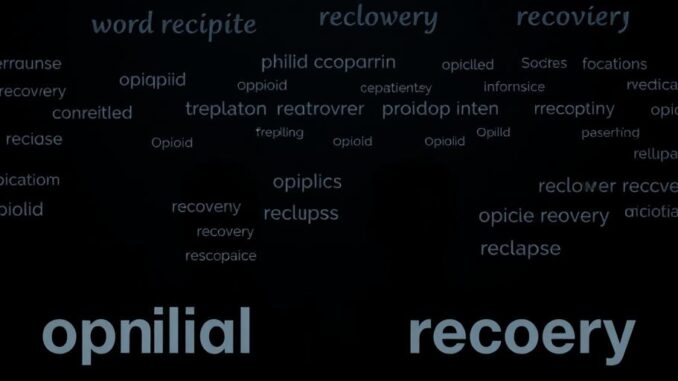
Summary
This article offers a practical guide to navigating opioid relapse, providing actionable steps for regaining sobriety. It emphasizes relapse as a part of recovery, not a failure, and offers strategies for managing triggers, seeking support, and building a relapse prevention plan. Remember, recovery is a journey, not a destination.
** Main Story**
Let’s face it, relapse happens. It’s a tough reality in opioid addiction recovery. But here’s the thing: relapse isn’t a full stop, it’s more like a comma in your recovery story. It doesn’t mean you’ve failed; it’s a temporary detour on the road to sobriety. Think of it as a learning opportunity, a chance to understand what went wrong and adjust your course.
This guide provides a practical, step-by-step approach to navigating a relapse and getting back on track.
Step 1: Own It and Accept It
First things first: acknowledge what happened. Accept that you’ve relapsed, but don’t beat yourself up about it. I know that’s easier said than done, but honestly, self-condemnation won’t help you move forward.
Addiction is a chronic illness, plain and simple. Relapse can be a part of it; like, it sucks, but that’s the reality. Don’t let guilt or shame paralyze you. They’ll only keep you from getting the help you need and deserve. It’s like when I accidentally sent a company-wide email with a typo in the subject line, mortifying, right? But dwelling on it wouldn’t fix it; I had to acknowledge it, apologize, and move on. You can do the same.
Step 2: Get Support, ASAP
Reach out, like, right now. Talk to someone you trust – a family member, a close friend, your sponsor, your therapist, even another member of your support group. Talking about what happened can ease feelings of isolation and help you process everything. It really can make a difference.
And you know, if you’re not comfortable sharing with someone you know personally, that’s okay too! Contact a helpline or crisis hotline. There are people ready to listen and support you. It’s a sign of strength to ask for help, not weakness.
Step 3: Time to Analyze, Not Agonize
Okay, so why did it happen? Understanding the triggers that led to the relapse is vital for preventing it from happening again. Did something specific set you off?
Start by reflecting on the events leading up to the relapse and jot down any potential triggers. Keeping a journal can be super helpful, it sounds cheesy but it works; document your thoughts, feelings, and situations that might have contributed to the relapse. Honestly, this self-reflection can give you serious insights into your vulnerabilities and help you develop effective coping mechanisms.
Step 4: Back to Treatment
If you were in treatment before, contact your healthcare provider immediately. It’s time to resume or modify your treatment plan. This could mean going through detoxification again, starting or adjusting medication-assisted treatment (MAT), individual therapy, group counseling, or a mix of all of the above. And don’t be afraid to try new things. What worked before might not be the best approach now.
Building a Relapse Prevention Plan: Staying Ahead of the Curve
Prevention is always better than cure, right? Preventing future relapses is about ongoing effort and taking charge of your recovery. Here are some key steps to include in your relapse prevention plan. It’s not rocket science, but it does take commitment.
-
Know Your Triggers: What sets you off? Recognizing high-risk situations is key to avoiding them. These triggers can be external, like certain people, places, or things that remind you of past drug use. Or they can be internal, such as stress, anxiety, or tough emotions. Once you know your triggers, you can either avoid them altogether, or you can develop strategies to manage them effectively. But how do you manage stress and anxiety? That’s the million dollar question!
-
Develop Killer Coping Skills: Healthy coping mechanisms are your secret weapon. They’re essential for dealing with challenges without turning to opioids. Think about activities that help you de-stress: exercise, yoga, meditation, or even just getting lost in a good book. Engaging in hobbies can also be a great outlet. These activities can help manage cravings and provide positive ways to deal with stress.
-
Strengthen Your Tribe: Surround yourself with people who support your recovery. Go to support groups or 12-step meetings – it helps to connect with others who understand what you’re going through. And engage with family and friends who are invested in your well-being. A strong support system will provide encouragement, accountability, and a sense of belonging.
-
Self-Care Isn’t Selfish: It’s essential! Your physical and mental well-being are crucial for long-term recovery. Focus on getting enough sleep, eating healthy food, and exercising regularly. And don’t ignore any physical or mental health issues you might have. Taking care of yourself will make you more resistant to cravings and stressors, honestly.
-
Get Pro Help: If you’re struggling to create a relapse prevention plan, don’t hesitate to reach out to a therapist or counselor. They can offer personalized guidance, help you identify triggers, develop coping strategies, and build a robust plan tailored to your needs. They can also help you navigate any underlying mental health issues that might be contributing to the risk of relapse.
Continuing The Journey
Recovery from opioid addiction, it’s a marathon, not a sprint. It takes continuous effort and unwavering commitment. By acknowledging relapse as a potential setback, seeking support, analyzing your triggers, and developing a solid relapse prevention plan, you can strengthen your resolve and improve your chances of staying sober long-term.
Remember, each day is a fresh chance to recommit to your goals and build a better, healthier life, free from opioid dependence. It’s not always easy, but you’ve got this. Stay strong and never, ever, give up on yourself. You deserve to live a life of sobriety and fulfillment. So keep going, one day at a time.


Be the first to comment